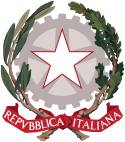| Part of the Politics series |
 |
|---|
|
|
The government of Italy is that of a democratic republic, established by the Italian constitution in 1948. It consists of legislative, executive, and judicial subdivisions, as well as of a head of state, known as the president.
The Constitution of the Italian Republic is the result of the work of the Constituent Assembly, which was formed by the representatives of all the anti-fascist forces that contributed to the defeat of nazis and the fascist forces during the Italian Civil War.[1] Article 1 of the Italian constitution states:[2]
"Italy is a democratic Republic founded on labour. Sovereignty belongs to the people and is exercised by the people in the forms and within the limits of the constitution."
By stating that Italy is a democratic republic, the article solemnly declares the results of the institutional referendum which took place on 2 June 1946 valid. The state is not the hereditary property of the ruling monarch, but instead a res publica, belonging to everyone.
The people who are called to temporarily administer the republic are not owners, but servants; and the governed are not subjects, but citizens. And the sovereignty, that is the power to make choices that involve the entire community, belongs to the people, in accordance with the concept of a democracy, from the Greek demos (people) and kratìa (power). However, this power is not to be exercised arbitrarily by mob rule, but in the forms and within the limits established by the rule of law.
- ^ McGaw Smyth, Howard (September 1948). "Italy: From Fascism to the Republic (1943-1946)". The Western Political Quarterly. 1 (3): 205. doi:10.2307/442274.
- ^ "The Italian Constitution". The official website of the Presidency of the Italian Republic.